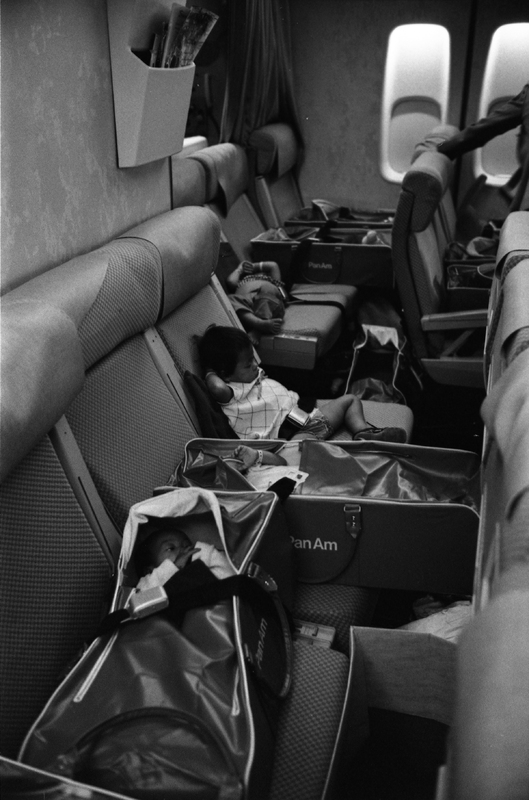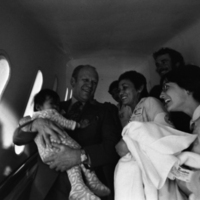Operation Babylift
By Josh Elrod
As Northern Vietnamese troops moved closer to South Vietnam, President Gerald Ford ordered the evacuation of South Vietnamese citizens and orphans. The U.S government collaborated with social welfare and adoption agencies, including Holt International, Welcome House, United Catholic Relief Services, and Friends for All Children to arrange the evacuation and adoption of Vietnamese children to families in the United States. The rescue mission, officially titled “Operation Babylift,” facilitated the evacuation of 2,000 Vietnamese orphans from Saigon to the United States and other western countries, including Australia, Canada, and parts of Europe. President Ford authorized the operation on April 3, 1975. The first flight occurred on April 4, 1975, just one day after President Ford’s authorization.
This ended in tragedy. Twelve minutes after takeoff, the C-5A Galaxy transport aircraft carrying an estimated 300 Vietnamese babies and American caretakers, exploded in midair. The plane’s rear cargo door failed, causing the aft pressure door, loading ramp, and cargo door to detach from the plane. With flight controls damaged, the pilots attempted an emergency landing at the Tan Son Nhut Air Base, but the plane eventually crashed in a marsh located two miles away from the airport runway. The impact from landing crushed the plane’s cargo deck, where almost all of the children were located. Operation Babylift’s first evacuation flight resulted in the death of 138 passengers, including 78 children. After learning about the plane crash, President Ford said, “Our mission of mercy will continue. Other waiting orphans will make this journey. This tragedy must not deter us from offering new hope for the living.”
On April 5, 1975, President Ford and First Lady Betty Ford traveled to San Francisco to meet the Vietnamese orphans and their adoptive families. The list of fatalities had not been released prior to Ford’s visit, so many parents waiting at the airport did not know if their children were still alive.
Operation Babylift sparked nationwide controversy and caused many Americans to question the potential political motives behind President Ford’s evacuations. Graham Martin, the American Ambassador to South Vietnam from 1973-1975, said that the evacuation “would help reverse the current of American public opinion to the advantage of the Republic of Vietnam.” In 1975, a class-action lawsuit, titled Nguyen Da Yen, et al. v. Kissinger, argued that the evacuation of Vietnamese children during Operation Babylift was unconstitutional because many of the evacuated children had living parents in Vietnam. The class action lawsuit was filed on the children’s behalf and based its arguments on the theory that detaining Vietnamese children during Operation Babylift violated their Fifth Amendment rights of liberty and due process. In February of 1976, the court ruled that the case did not qualify as a class action suit. After appealing the ruling for two years, all three judges that controlled the case gave up their control which reassigned the case to a different panel in 1979. The judges’ relinquishment of control effectively ended the lawsuit because the Vietnamese children brought to the United States were deemed to be “too old” for reunification with their biological parents.
Further readings:
- LÊ ESPIRITU, YẾN. “Militarized Refuge: A Critical Rereading of Vietnamese Flight to the United States.” In Transpacific Studies: Framing an Emerging Field, edited by Janet Hoskins and Viet Thanh Nguyen, 201–24. University of Hawai’i Press, 2014.
- VARZALLY, ALLISON. “After the Airlifts.” In Children of Reunion: Vietnamese Adoptions and the Politics of Family Migrations, 48–76. University of North Carolina Press, 2017.



